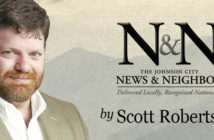By Jeff Keeling
“OK Google,” I heard a small child’s voice say: “What’s the deadliest snake in South Carolina?”
“The eastern diamondback rattlesnake is considered by many to be South Carolina’s deadliest snake,” a computerized female voice responded.
That the ebullient Owen had my Samsung smartphone in his deft little hands while we were vacationing at the beach a couple of months ago is perfectly unremarkable. The little shaver has been a proficient user of smartphone technology since before he was pronouncing “app thtore” in that cute little lisp that he ditched when he was 4.
But here he was, not quite 6 years old, finding and utilizing a voice recognition app on my phone that, up until then, I hadn’t even known existed. That’s right: I’ve owned my phone for nearly three years and had no idea it had the Android equivalent (with a much better voice, in my opinion) of the Apple iPhone’s “Siri.”
We all had a good laugh after I learned, unsurprisingly, that my phone has a voice search function. It stands to reason that whatever “must have” smartphone feature Apple has, Android is going to duplicate and attempt to best, and vice versa.
Though I was blissfully unaware of this absolutely critical, can’t-live-without piece of smartphone infrastructure I had been carrying around in my pocket for three years, I’m no technophobe. I can create videos in iMovie, size and edit photos, create PowerPoints and proficiently utilize numerous other helpful computer-based advantages. I’ve just always been pretty utilitarian in learning and using the endless number of bells and whistles available to us as modern homo sapiens.
For instance, rather than downloading a “map my run” type of app to tell me following runs, biking trips and hikes how far I’ve gone, in what time, with calorie burn and total elevation gained, I like to get home, sit at my computer and manually perform the task on “Mapometer.” Maybe I’ve got a bit of the neo-Luddite in me, but I’d say it’s more just a matter of not wanting to bring my phone with me on rides and runs – those extra ounces slow me down.
I’m almost embarrassed to admit it, but I’ve never downloaded an app to my Samsung.
Now I must admit, beyond the obvious – she’s gorgeous and she’s great company – it was helpful to be traveling with the lovely and talented Angela during our recent 20th anniversary trip to Maine. (Vivacious and young-looking as she is, she also crested the half-century mark on that wonderful, weeklong visit to Acadia National Park.)
Her iPhone is chock full of helpful apps. Yelp helped us find some great eateries. And when she was driving and I was navigating outside of Boston on I-495, I noticed way too many stretches of red and brick red road ahead on her Google Maps app (I do have that app, but she gets better Internet coverage on her phone) as the road headed toward Newburyport, our destination.
“Get off at the next exit,” I told her, having with my analog map-reading skills noticed a route through the ‘burbs that might not save time, but would probably be more fun, less crowded and less stressful. I zoomed that map in close and we snaked our way through Tewksbury, North Andover and Georgetown, seeing towns, neighborhoods and countryside as opposed to the back bumpers of other frustrated motorists.
I’m a map lover, so I was happy as a hog in slop watching the little blue dot make turn after turn, and converting right turns to left turns in my head when our direction didn’t match the map’s orientation. We reached our destination in a way we never would have pre-Google maps, our tempers unfrayed, and enjoyed a lovely evening in the historic town once home to privateers and later, abolitionist leaders.
Apps and like technology are tools. More and more people are using them. The more a community maximizes its use of these kinds of tools to attract people and capital to the particular assets it features, the more livable and prosperous that community will become.
As noted on page 8, economic developers and others are taking notice of that fact in the Johnson City MSA (Washington, Carter and Unicoi counties). That’s a good thing, and I hope one day the answer to “OK Google – What is Southern Appalachia’s best outdoor playground” is: “The Johnson City Metropolitan Statistical Area is considered Southern Appalachia’s premier outdoor playground.”




